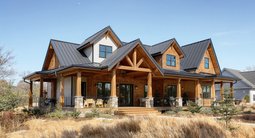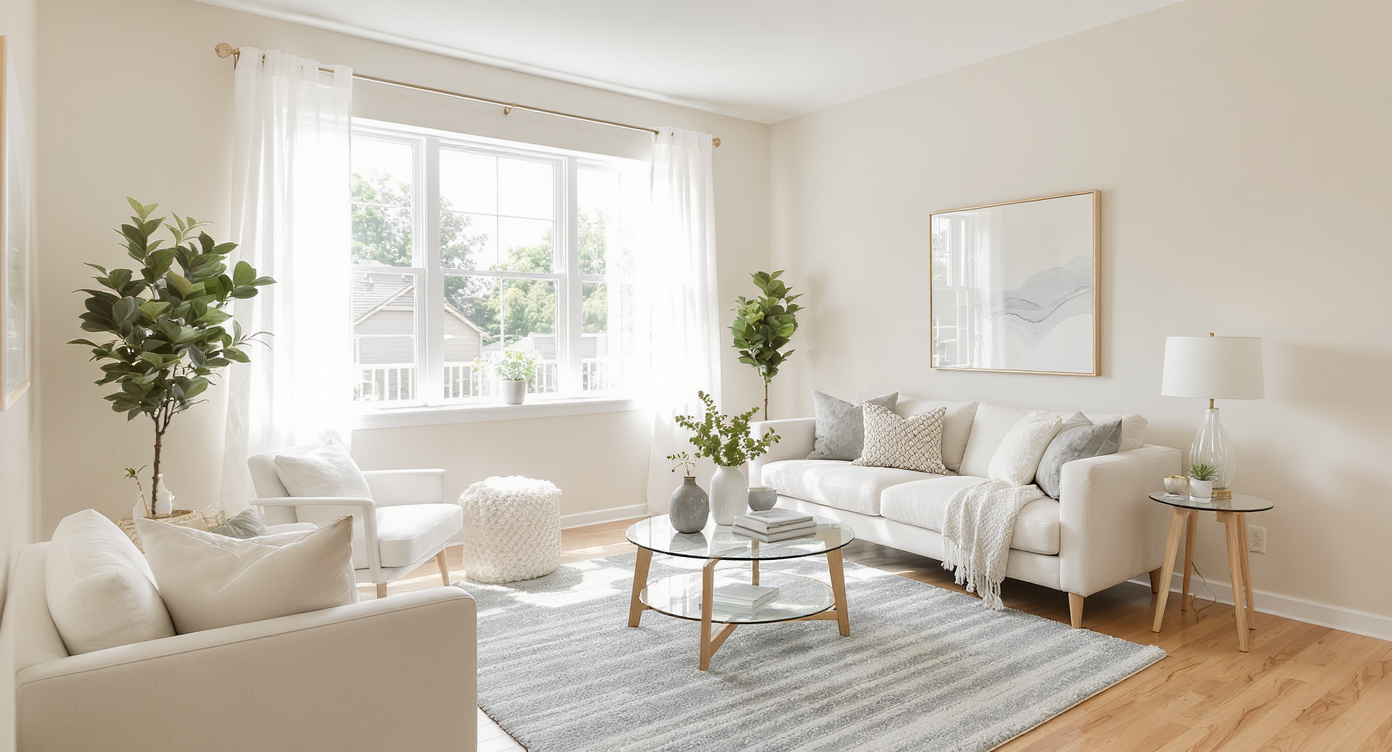TL;DR
TL;DR: If you’re wondering how to stage a house for sale inexpensively, focus on decluttering, neutral paint, lighting, purpose-driven rooms, and virtual staging for real estate listings. Agents often report a 1–5% price lift and faster offers when homes show clean, bright, and move-in ready online.
Budget home staging that works in any market

Key budget staging strategies include cleaning, lighting, fresh paint, and virtual staging for quick buyer appeal.
SEO intro (140 characters): Budget home staging that works: simple fixes, smart visuals, and virtual staging to help listings sell faster and for stronger offers.
Home staging isn’t just for luxury listings. In a market where buyers scroll through property photos in seconds, inexpensive home staging and smart real estate marketing can make a big difference. Here’s the thing: buyers form opinions fast. Agents often report that staged photos get more clicks and more showings, which translates to stronger offers.
Research consistently shows staging influences perception. Many buyer agents say staging helps clients visualize a property, and sellers’ agents frequently observe a 1–5% bump in perceived value. If you’ve been searching for how to stage a house for sale inexpensively, the path is simple: clean, brighten, define spaces, and show it beautifully online with virtual staging when needed.
The core strategy: what to do (and what it should cost)
“Spend where the camera sees, save where it doesn’t.” Experienced listing agents prioritize visuals that boost clicks, showings, and offers.
Here’s a practical, cost-aware plan that helps a listing look its best without overspending. Use these steps to make your property photos and virtual tours shine.
- Declutter and depersonalize (free). This is the highest-ROI move in home staging. Remove 50–70% of visible items. Box family photos, trophies, excess toys, and small décor. Aim for clear counters and simplified surfaces. Caption idea for your listing: “Bright, simplified living room.” Alt text: clean living room with minimal décor and neutral sofa.
- DIY repairs and touch-ups ($0–$100). Tighten loose handles, silence squeaks, patch small holes, re-caulk around tubs and sinks. Small fixes signal good maintenance — buyers notice.
- Paint in light neutrals ($60–$200/room). Neutral walls (soft white, warm beige, light gray) make spaces look bigger and brighter. Many agents say a fresh coat pays for itself because it photographs beautifully.
- Refresh décor you already own (free–$50). Restyle shelves, borrow a rug from another room, add two matching throw pillows, and a simple green plant. Lamps in dark corners can lift a photo immediately.
- Layer lighting ($20–$60). Replace dim bulbs with daylight LEDs (2700–3000K for warm, inviting tone). Bright rooms read larger in listing photos. Photographers often advise turning on every light for shoots.
- Keep it fresh (free–$20). Air out rooms, avoid heavy scents, use cut greens or a bowl of citrus. A neutral, clean smell sets the tone at the door.
- Mirrors for light and space ($20–$80). Place a mirror opposite a window or at the end of a hall to bounce light. Alt text idea: hallway with mirror reflecting natural light.
- Give every room a purpose (free–$60). Turn the “storage bedroom” into a simple guest room or micro office using what you have. Buyers value clear function — it increases perceived square footage.
- Simple open house flyer (free). One page with key features, school info, and a floor plan helps buyers remember your home. Keep design clean; highlight your best photo.
- Organize closets (free). Storage sells. Remove half of what’s inside, line hangers in one direction, and clear the floor. Buyers will open doors.
- Create clear pathways (free). Reposition furniture so buyers can move easily. In photos, sightlines matter. Sofas should frame a view, not block it.
- Stage the entry and curb ($30–$100). Fresh doormat, swept steps, trimmed edges, and a seasonal planter. The first 10 seconds set expectations for the tour.
- Pet plan (free). During showings, relocate pets and stash beds, bowls, and litter. Even pet lovers prefer a neutral presentation.
- Photo-ready details (free–$30). Steam bedding, smooth shower curtains, hide cords and trash cans, and align chair legs. These micro-fixes make listing photos look editorial.
- Virtual staging for empty or sparse rooms ($16–$40/image). If the home is vacant or light on furniture, virtual staging can be a fraction of traditional cost and delivered in 24–48 hours. Experts suggest keeping styles realistic so buyers recognize the space on tour. Consider ReimagineHome to test multiple looks quickly.
Many sellers spend less than $300 on these essentials and see stronger offers faster, especially when photos lead the story.
Anecdote
A suburban seller who once feared high staging costs reimagined their home with thrifted lamps, repainted walls, and two virtually staged rooms. The total outlay was under $300, and their agent noted a surge in showing requests — proof that small, strategic tweaks can outperform big budgets.
Common mistakes and misconceptions
“Good staging clarifies; bad staging confuses.” The goal is trust — not trickery.
- Over-editing listing photos. Heavy filters or unrealistic furniture scale can mislead. Agents advise subtle edits that match the real tour.
- Too much personality. Niche art, bold wallpaper, or busy patterns reduce buyer pool. Keep it neutral for broad appeal.
- Lighting mismatches. Mixed bulb colors (cool in the kitchen, warm in the hall) make rooms look off. Keep a consistent color temperature.
- Ignoring small repairs. A dripping faucet or chipped trim can read “deferred maintenance.” Quick fixes reassure buyers.
- Cluttered floors and blocked sightlines. If the camera can’t see the room, neither can buyers. Clear floor space and showcase the layout.
Pro tips from agents, stagers, and photographers
“Stage for the screen first.” Most listings are discovered on phones, and agents estimate the majority of views happen on mobile.
- Shoot with a plan. Before photos, walk the path buyers will see online: entry, living, kitchen, main bed, best bath, outdoor. Style only what the camera sees.
- Choose three hero moments. Market analysts suggest leading with three standout visuals: the brightest room, the best angle of the kitchen, and an inviting primary suite.
- Use scale-correct décor. Photographers recommend medium-scale art and matching lamps to create balance in wide-angle shots.
- Caption and alt text help AEO. Write descriptive, keyword-rich captions for each image. Example caption: “Sunny, neutral living room staged for flexible seating.” Alt text: “living room with light walls, neutral sofa, and green plant.”
- Keep virtual staging realistic. Agents often advise using styles that fit the home’s price point and location. If buyers recognize the room on arrival, trust goes up.
Stories from the field: small budgets, big results
“Small budgets can deliver outsized results.” The right changes shift how buyers value your home.
- The rental-to-owner pivot. A seller in a starter-home neighborhood spent about $180 on paint, bulbs, and plants. Online engagement jumped, and the home received three offers in five days, all at or above list.
- Vacant condo, virtual win. A downtown studio sat empty for weeks. After virtual staging a living zone, a desk nook, and a sleep area, the listing saw a meaningful increase in saves and booked two showings the first weekend.
- The closet story. One homeowner pulled half their wardrobe and stored it offsite. The agent reported buyers praising “unexpected storage,” despite the square footage staying the same.
Visualization Scenario
Picture a bright entry with a fresh mat, a plant, and clear sightlines to a sunlit living room. On your phone, the first image shows a neutral sofa, a simple rug, and a leafy plant echoing the window light — exactly what you see walking in. That harmony between photo and reality builds instant trust.
FAQ: budget home staging and virtual staging
- How much does home staging cost and what’s the cheapest way to stage a house?
Traditional home staging can range from a few hundred to a few thousand dollars, but the cheapest way is DIY: declutter, paint neutrals, and add lighting. For vacant spaces, virtual staging for real estate listings often costs $16–$40 per image. - Is virtual staging worth it for agents and sellers on a budget?
Virtual staging is cost-effective for empty or sparse rooms and helps listings look complete online. Many agents report faster inquiries when photos show clear furniture layout and style. - Can buyers tell if listing photos are virtually staged?
Most buyers can when furniture looks too perfect or scale is off, so keep virtual staging realistic. Labeling virtually staged images maintains trust and prevents confusion at showings. - What rooms should I stage first to sell a house fast?
Prioritize the living room, kitchen, primary bedroom, and the entry because these drive most decisions in home staging. Focus on one great shot per space for your cover sequence. - What are the best low-cost home improvements before selling?
Fresh paint, LED lighting, minor repairs, and closet organization are high-ROI, low-cost moves for budget-friendly home staging. Add simple greenery and neutral textiles for warmth in photos.
Tools & resources: For fast concepting and realistic visuals, try ReimagineHome. Pair with free design templates, floor plan apps, and your agent’s preferred photographer for strong listing photos.
Tags:
- Home staging
- Virtual staging
- Budget home staging tips
- Real estate marketing
- How to stage a house for sale inexpensively
- Property photos and listing strategies
- Virtual staging for real estate agents
- Best low-cost upgrades before selling
CTA: Want to test multiple looks before you lift a paintbrush? Explore AI-powered layouts and styles with ReimagineHome and get photo-ready options in hours.
Make buyers feel at home — without overspending
Let’s be real: you don’t need perfection to sell well — you need clarity and comfort. Clean surfaces, neutral paint, purposeful rooms, and honest, attractive visuals form a powerful combination. If you’re working with a tight budget, choose the fixes that a camera loves. And when rooms are empty or awkward, use ReimagineHome to test virtual looks that help buyers imagine life there.




.svg)

.svg)



.png)